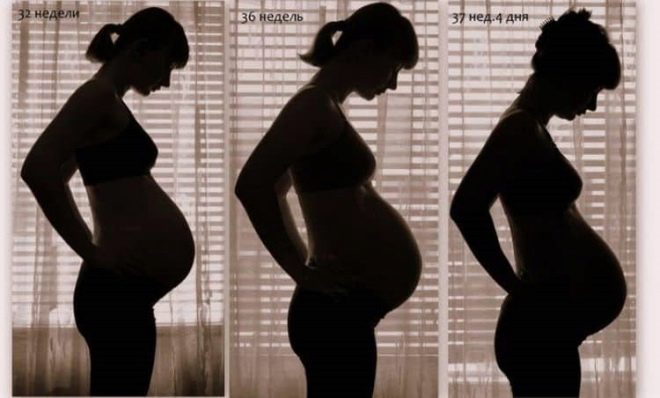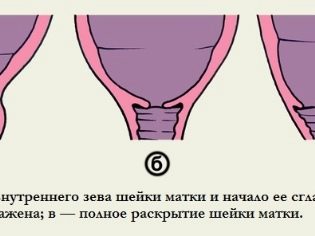How do births begin in figurines?
About what will be the beginning of childbirth, almost from the very beginning of pregnancy think all women who are waiting for the birth of the first child. In the absence of their own generic experience, it is rather difficult to understand how and what is happening, so pregnant women are afraid to miss the beginning of an important process, to confuse it with something else. In this article we will tell you how labor starts in primiparous women and what signs and symptoms a woman should pay special attention to.
We give birth or not?
This question is usually relevant as the date is circled in the calendar in a circle or rectangle. The estimated date of birth is not a guide to action, but only an approximate guide. Therefore, it is not necessary to assume that childbirth will take place on the very day indicated in the medical record of the pregnant woman. The first pregnancy usually ends in childbirth at the 39-40 week of pregnancy, every third woman gives the baby up to 41 weeks, and about 10% of expectant mothers carry their firstborn until 42 weeks.
A healthy female body at first birth takes more time to prepare, to develop all the prerequisites for the onset of labor than to multiparous ones, and the birth itself usually lasts somewhat longer than that of experienced mothers who come to the maternity hospital for the second or third baby.
The answer to the question of whether a woman gives birth, affirmatively and immediately can be done by two reliable signs:
- the waters are gone;
- started fighting.
Classical uncomplicated childbirth is considered to be a generic process that started exactly from contractions. If there was rupture of amniotic fluid, you should immediately go to the hospital and do not self-diagnose anything. But the discharge of water does not cause as many questions as the development of contractions. Women are afraid to confuse them with training, false.
The difference is very significant - false contractions irregular. They can advance, disappear, repeat at irregular intervals of time. True labor contractions from the first uterine contraction will be different rhythm. Feelings will increase, and the cuts will be repeated at regular intervals. There is no possibility to calculate when they will begin, since the process is reflex and sudden. But it’s necessary to count the contractions themselves, because they will point to the stage of labor and tell you when to go to the obstetric institution.
The first fights - how to behave?
The first contractions are latent. They are not too painful and are more like pain in the lower back and lower abdomen during menstruation. Gradually, these sensations will resemble the “girdling” with reinforcement - the bout begins somewhere in the back, lowers down the lower back, girds, passes into the lower abdomen and covers the entire abdomen. Then he gradually retreats, a period of rest begins.
The first contractions are usually repeated every 30-35 minutes. Lasts not for long and the woman’s rest periods are large. Go, drink tea, cook borscht for your husband (he will have something to eat for several days without you!), Don't lie. Movement and calm measured breathing will help to tune in childbirth, reduce discomfort, and will also contribute to the process of cervical dilatation.
You can take a shower, check the bag collected in the hospital - if everything is in place. The stage is quite long. It is necessary to go to the maternity hospital with the interval between contractions of 5 minutes. For this, for the first time, giving birth has from 6 to 8 hours. Agree, enough time to understand that the birth begins.
If “No-Shpa”, attempts to lie down and rest, a warm shower does not help to get rid of uterine contractions, if the sensations only increase, you cannot fall asleep, then with high probability a full-fledged labor activity began. Calculate contractions will help special counters contractions - mobile phone applications.
It's time to maternity hospital ...
Already in the hospital contractions will become active. They will be repeated every 3 minutes and the uterine tension will last almost a minute or a little less. Strengthening pain will help to recognize this stage and begin to apply all the knowledge obtained in the future mothers' courses and independently to breathe, as they have been taught, to take the necessary poses to ease the contractions. During this period, which can last for up to 5 hours in a primiparous woman, a woman is allowed to walk, stand, sing, lie down, sit, do whatever she wants, if it is comfortable.
Before the attempts will come the stage of transitional fights - these will be the strongest fights, but fortunately, the period is not long - from half an hour to an hour and a half. For all three periods, the uterus will unfold completely and a good period will begin, during which the firstborn will be born and will announce the birth of the first cry to the delight of the doctors and the newly made mother.
Forerunners
Although the beginning of labor is a reflex, not obeying the will of the woman, there are some signs that may indicate that the process is already approaching. You just need to more closely monitor their own state.
In giving birth for the first time, precursors are usually not the best assistants in determining the onset of labor activity. The fact is that the first signs of the beginning preparation of the organism may appear during the first pregnancy even one month before the birth of the baby, that is, at 35-36 weeks and a little later. It is in multiparable precursors that most often make themselves felt at the beginning of week 39, that is, just a few days before the start. Birth for the first time will have to be patient. What signs may indicate that the preparation for childbirth is going?
- First of all, abdominal prolapse. This feature occurs at about week 36. It is connected with the fact that the child from the middle or upper part of the uterus “migrates” downward and, similarly, to the marathon runner, takes the position of a low start - pressed against the head to the still closed inner throat. The stomach changes shape, it becomes lower, breathing becomes easier, heartburn decreases, but the urge to urinate increases, pain in the pelvic bones and the pubic joint may begin to disturb. Most often, the stomach in women who are pregnant for the first time, drops 2-3 weeks before the baby is born.
- A woman suddenly begins to lose weight a week before giving birth, minus 2-3 kilograms - quite real. This is due to a decrease in progesterone in the body and the subsequent release of excess fluid in the intercellular space. The decrease in body weight is also associated with a decrease in the amount of water in the fetal bladder. According to reviews, in many pregnant women, the body begins to cleanse itself - diarrhea can suddenly start.
- 2-3 weeks before giving birth in pregnant women, the nature of the discharge changes for the first time.. Due to lower progesterone, they become more fluid. The main thing here is not to overlook and not miss the leakage of water.
If there is any doubt, you can use amniotest, but it is better to consult a doctor - in the arsenal of specialists there are more opportunities to diagnose with higher accuracy, if there is an admixture of amniotic fluid in the vaginal secretions.
- About a week before delivery or even earlier a woman may notice the release of pieces of mucus, similar to the tight jelly - so the mucus plug comes off. The gelatinous substance may be whitish (milky) or yellowish. It admits the admixture of blood. The cork can go off in parts or come out simultaneously in a big bunch. From this point on, it is important to pay special attention to personal hygiene. Swim in the bath and have sex can not.
- Often, the first birth preceded by changes in health and mood.which are associated with changes in hormonal levels. A woman can become whiny and capricious, emotionally unstable, unrestrained. The dream worsens, it becomes difficult for a woman not only to fall asleep, but also to sleep without waking up at least 4-5 hours.
- A couple of days before birth babies, even very restless ones, who during the pregnancy did not give mom peace, become quieter - they also accumulate energy before the generic process, because the child also has to work while passing through the narrow birth canal for him.
- A more reliable sign - cervical maturity. It is determined by the doctor at the next scheduled admission from the antenatal clinic from the 37th week of pregnancy. If the doctor says that the cervix has become short (one centimeter and a little more), if the cervix softens and begins to open slightly, childbirth can happen on any given day. It should be mentally and physically ready for this, not to go far away from home for a long time, take the necessary documents with you even for the bread campaign, since the birth process can be caught anywhere.
- Often women say that a week before giving birth to them there was a great desire to make repairs or rearrangement, do general cleaning. This “nesting syndrome” is a modern manifestation in rational women of the ancient instincts of animal ancestors (arranging a nest or hole is an important condition for the survival of the offspring).
- A quick birth may indicate a change in appetite, the appearance of colostrum and many other factors. It is difficult to unequivocally say how the female body in each case will react to the internal processes of the preparation of the body.
It is important to remember that a combination of 3-4 signs most likely indicates an approaching birth.
But every single symptom may well indicate that it will soon give birth, as well as the fact that certain complications have appeared. So, frequent urination can speak about cystitis, and diarrhea - about poisoning or infection with an intestinal infection. An increase in body temperature is not always a sign of fast delivery, and sometimes an important symptom of an inflammatory process or a viral disease, and training bouts can be a sign of the threat of premature birth if they have increased to 37 weeks.
Therefore, it is best to leave a primiparous mother, who still knows little about the peculiarities of her own reproductive health, and fear of appearing ignorant, and more often disturb her obstetrician-gynecologist with questions about the essence of certain sensations that appear in the last month of pregnancy. This will help to timely distinguish the precursor from pathology, and the true contractions from the false ones.
How to understand that childbirth began and define contractions, see the next video.



























